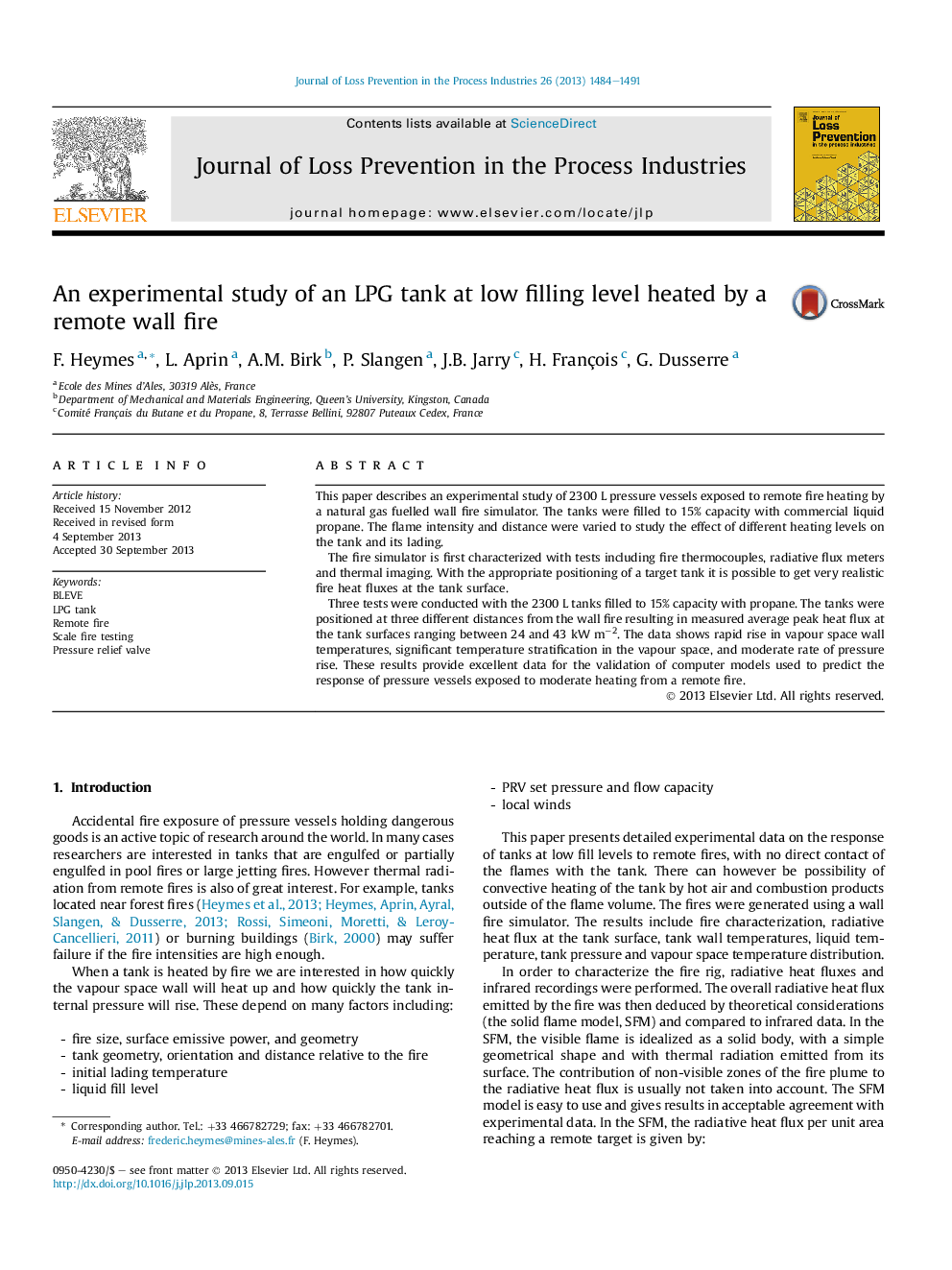| Article ID | Journal | Published Year | Pages | File Type |
|---|---|---|---|---|
| 586432 | Journal of Loss Prevention in the Process Industries | 2013 | 8 Pages |
•Heating of a tank by remote fires can result in significant wall temperature and tank pressure raise.•Heating of a tank by remote fires can lead to the activation of pressure relief devices.•The failure of fittings may lead to a leak of propane that could be ignited, causing self-heating of the tank.•The tank behaviour was modelled using models that account fire heat fluxes, energy and mass conservation.
This paper describes an experimental study of 2300 L pressure vessels exposed to remote fire heating by a natural gas fuelled wall fire simulator. The tanks were filled to 15% capacity with commercial liquid propane. The flame intensity and distance were varied to study the effect of different heating levels on the tank and its lading.The fire simulator is first characterized with tests including fire thermocouples, radiative flux meters and thermal imaging. With the appropriate positioning of a target tank it is possible to get very realistic fire heat fluxes at the tank surface.Three tests were conducted with the 2300 L tanks filled to 15% capacity with propane. The tanks were positioned at three different distances from the wall fire resulting in measured average peak heat flux at the tank surfaces ranging between 24 and 43 kW m−2. The data shows rapid rise in vapour space wall temperatures, significant temperature stratification in the vapour space, and moderate rate of pressure rise. These results provide excellent data for the validation of computer models used to predict the response of pressure vessels exposed to moderate heating from a remote fire.
